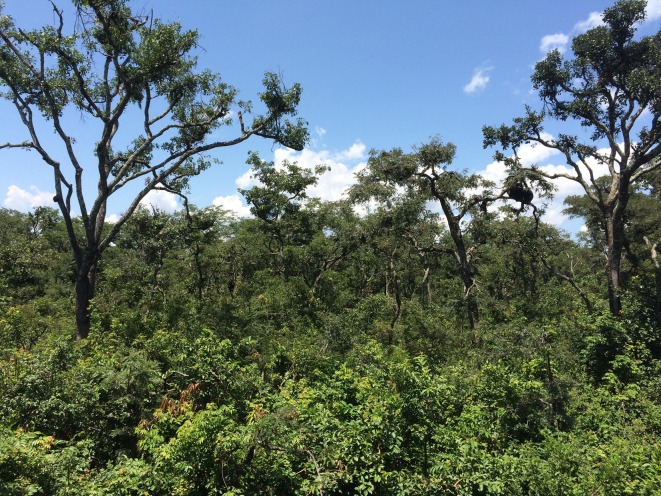Farine and Aplin (1) question the validity of our study reporting group-specific social dynamics in chimpanzees (2). As alternative to our approach, Farine and Aplin advance a “prenetwork permutation” methodology that tests against random assortment (3). We appreciate Farine and Aplin’s interest and applied their suggested approaches to our data. The new analyses revealed highly similar results to those of our initial approach. We further dispel Farine and Aplin’s critique by outlining its incompatibility to our study system, methodology, and analysis.
First, when we apply the suggested prenetwork permutation to our proximity dataset, we again find significant population-level differences in association rates, while controlling for population size [as derived from Farine and Aplin’s script (4); original result, P < 0.0001; results including prenetwork permutation, P < 0.0001]. Furthermore, when we exchange “population size” for “density” (i.e., population size/enclosure size) in our analyses, as suggested by Farine and Aplin, we continue to find strong evidence for population-level differences in association rates [generalized linear mixed model (GLMM) with population size, P < 0.0001; GLMM with density, P < 0.0001]. Interestingly, whereas population size significantly explains variation in association indices (P = 0.012; see ref. 2), density does not (P = 0.912), indicating that chimpanzees intentionally navigate their social world. Here, we note that this argument is consistent with decades of previous research that has shown that chimpanzees are intentional animals who selectively associate rather than “bump into” their conspecifics (5–8), even in small zoo enclosures (9, 10).
Second, we address the incorrect assumptions integrated into Farine and Aplin’s simulation approach. Farine and Aplin’s rule for deriving “proximity” from the simulated data bears no resemblance to the heuristic used in our original study (2). Where Farine and Aplin identify individuals as being in proximity (or “connected”) within a range of ∼4,000 m2 (i.e., “1 unit relative to side-length”; see ref. 1), for our party size analysis we used ∼1,000 m2 and for all our other measures based on “proximity” we used ∼3.14 m2 (i.e., 1 arm-length radius). When the adjusted “units” are applied in Farine and Aplin’s simulation, none of the group members would be in proximity to one another. These results reflect the vastness of the chimpanzees’ enclosures (even discounting chimpanzees’ habitual use of the vertical dimension; e.g., see Fig. 1) and corroborate the implausibility that the chimpanzees in our study setup associate randomly. Furthermore, Farine and Aplin misrepresent our analyses as a GLMM with Gaussian error structure (where assumptions of normality were violated), thereby incorrectly portraying our approach as prone to elevated type I error rates. Instead, we used a hurdle approach with binomial and gamma error structure (2). When corrected in Farine and Aplin’s script (4), our approach yields the same low type I error rate to obtain our original finding as the suggested prenetwork permutation approach (i.e., 2%).
Fig. 1.
Chimpanzees at the Chimfunshi Wildlife Orphanage Trust, Zambia, live in large forested enclosures, which provide ample opportunity to avoid group members, if preferred. More importantly, if preferred, chimpanzees seek close proximity to group members, even when space is abundant (detailed are two physically associating chimpanzees up in the second tree from the right).
Last, Farine and Aplin ignore that we report equally strong evidence for population differences in the chimpanzees’ grooming tendencies (2). Whereas space constraints could lead to random associations, it appears untenable that chimpanzees groom each other randomly (10, 11). The alignment of our proximity and grooming findings make a strong case for population-specific social dynamics in chimpanzees, as reported in our original study (2).
Acknowledgments
We thank Roger Mundry for constructive discussions regarding the manuscript. E.J.C.v.L. is funded by a postdoctoral fellowship awarded by the Research Foundation Flanders.
Footnotes
The authors declare no conflict of interest.
References
- 1.Farine D. R., Aplin L. M., Spurious inference when comparing networks. Proc. Natl. Acad. Sci. U.S.A. 116, 16674–16675. [DOI] [PMC free article] [PubMed] [Google Scholar]
- 2.van Leeuwen E. J. C., Cronin K. A., Haun D. B. M., Population-specific social dynamics in chimpanzees. Proc. Natl. Acad. Sci. U.S.A. 115, 11393–11400 (2018). [DOI] [PMC free article] [PubMed] [Google Scholar]
- 3.Bejder L., Fletcher D., Bräger S., A method for testing association patterns of social animals. Anim. Behav. 56, 719–725 (1998). [DOI] [PubMed] [Google Scholar]
- 4.Farine D. R., Aplin L. M., Code and supplementary information for “Spurious inference when comparing networks.” Edmond Repository, 10.17617/3.2b. Accessed 20 May 2019.
- 5.Boesch C., Hohmann G., Marchant L. F., Behavioural Diversity in Chimpanzees and Bonobos, Boesch C., Hohmann G., Marchant L. F., Eds. (Cambridge University Press, Cambridge, 2002). [Google Scholar]
- 6.Wrangham R. W., Chimpanzee Cultures, Wrangham R. W., McGrew W. C., de Waal F. B. M., Heltne P. G., Eds. (Harvard University Press in cooperation with the Chicago Academy of Sciences, Cambridge, MA, 1996). [Google Scholar]
- 7.Goodall J., The Chimpanzees of Gombe: Patterns of Behavior (Belknap Press of Harvard University Press, 1986). [Google Scholar]
- 8.Nishida T., The Chimpanzees of Mahale: Natural History and Local Culture (Cambridge University Press, 2012). [Google Scholar]
- 9.de Waal F. B. M., Chimpanzee Politics: Power and Sex Among Apes (Johns Hopkins University Press, 2007). [Google Scholar]
- 10.Kanngiesser P., Sueur C., Riedl K., Grossmann J., Call J., Grooming network cohesion and the role of individuals in a captive chimpanzee group. Am. J. Primatol. 73, 758–767 (2011). [DOI] [PubMed] [Google Scholar]
- 11.Stanford C., The New Chimpanzee: A Twenty-First-Century Portrait of Our Closest Kin (Harvard University Press, 2018). [Google Scholar]



